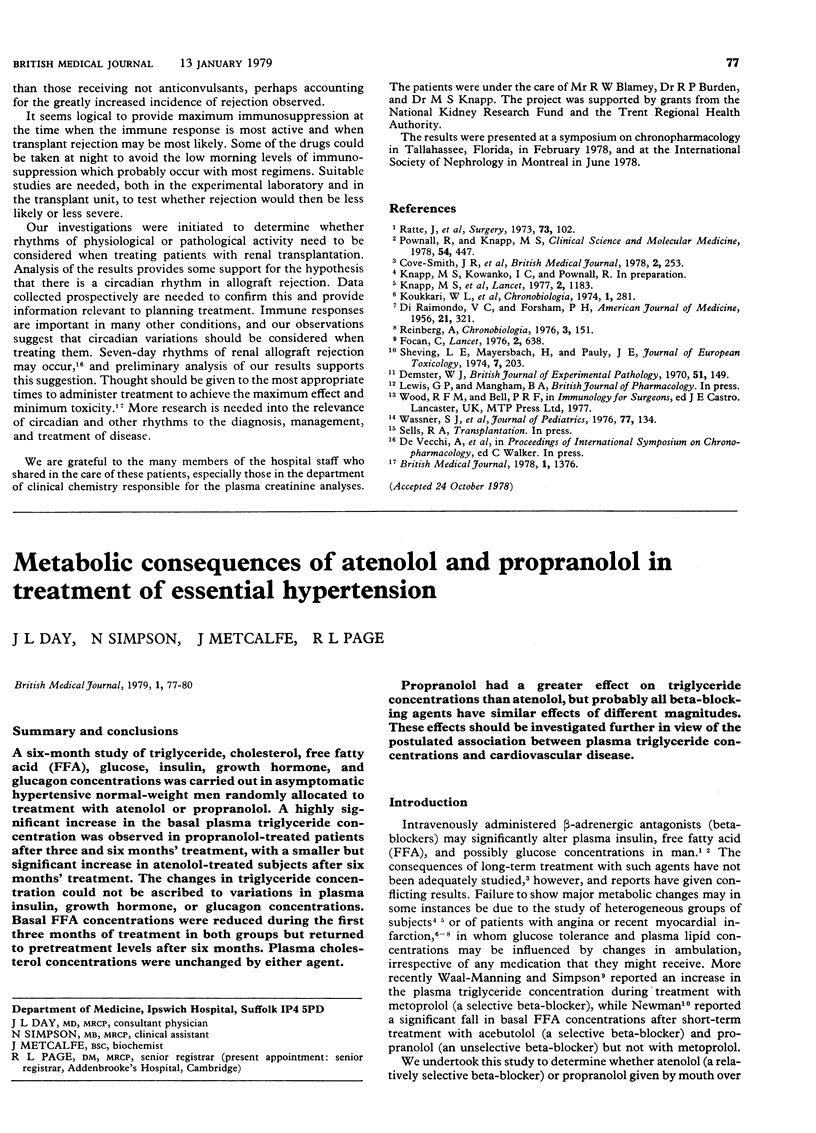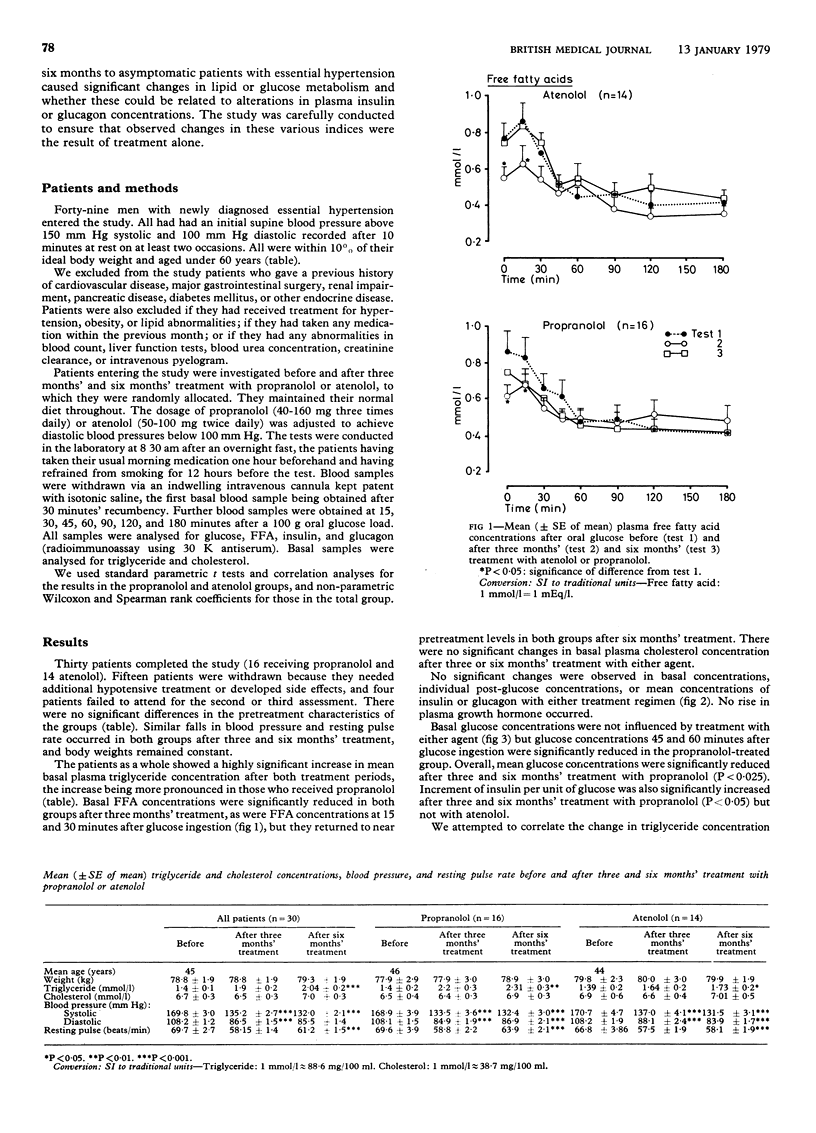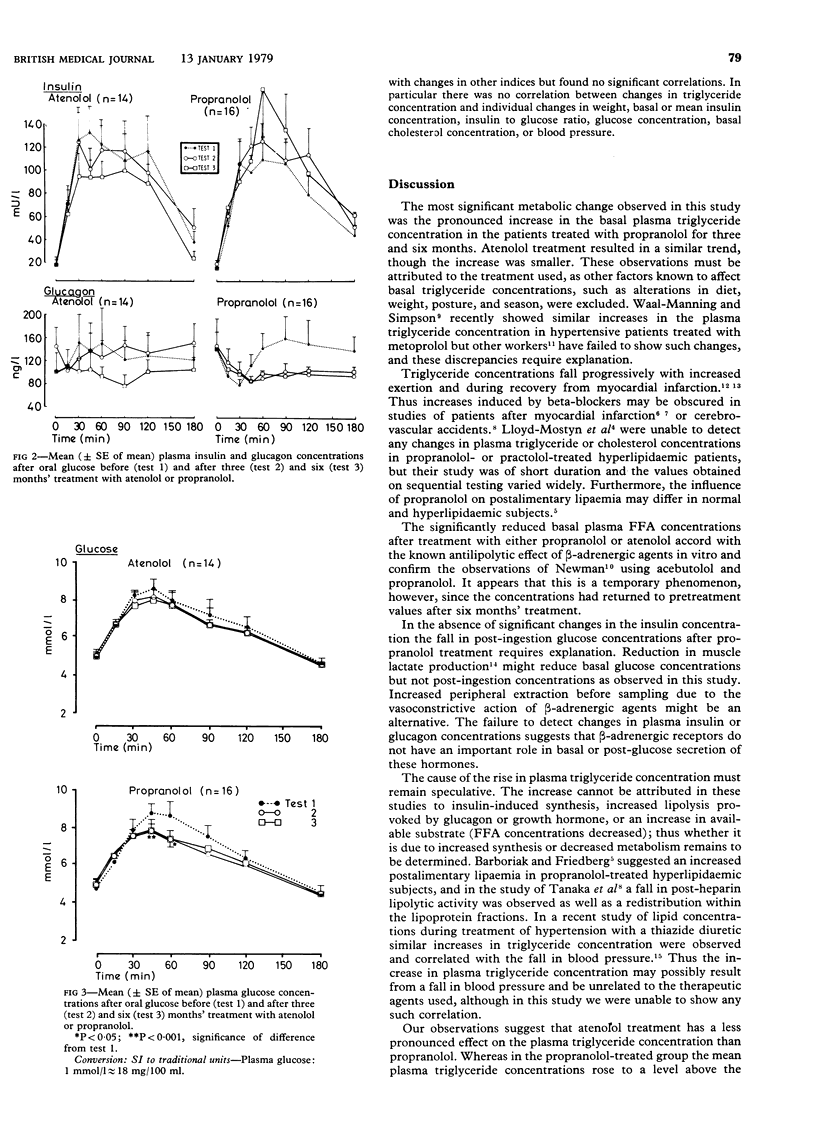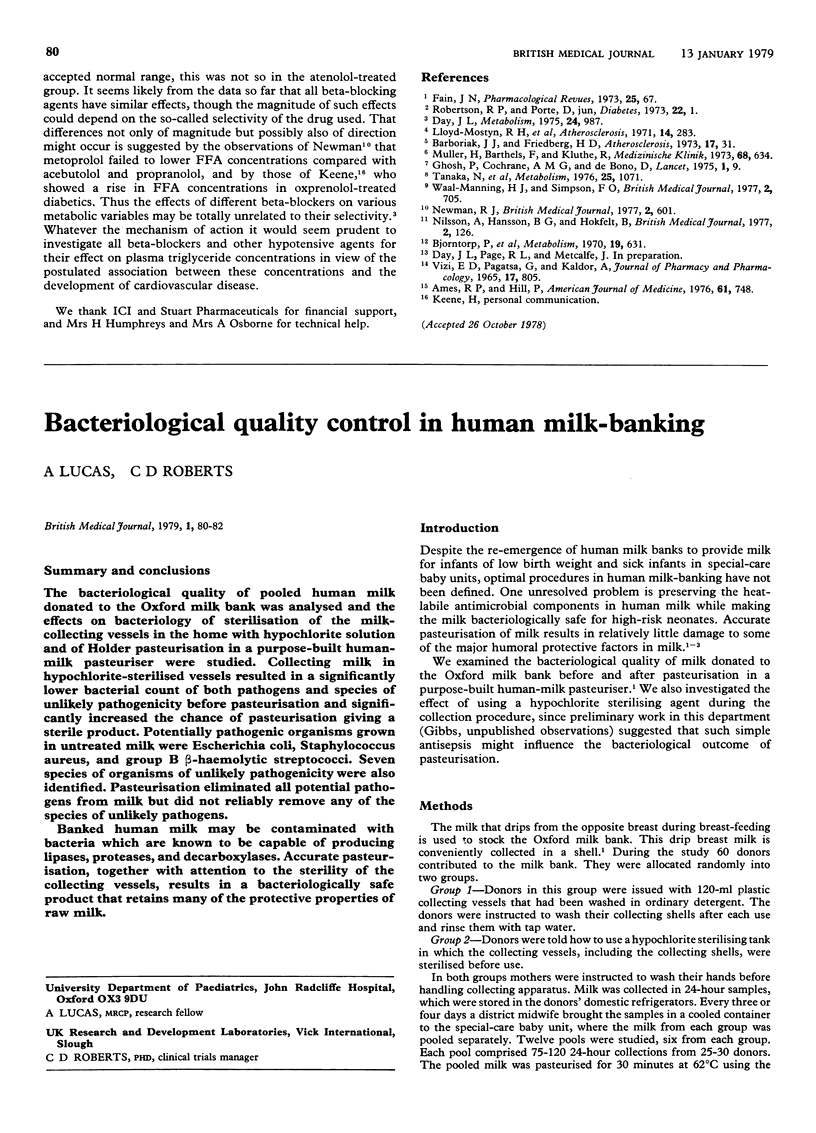Abstract
A six-month study of triglyceride, cholesterol, free fatty acid (FFA), glucose, insulin, growth hormone, and glucagon concentrations was carried out in asymptomatic hypertensive normal-weight men randomly allocated to treatment with atenolol or propranolol. A highly significant increase in the basal plasma triglyceride concentration was observed in propranolol-treated patients after three and six months' treatment, with a smaller but significant increase in atenolol-treated subjects after six months' treatment. The changes in triglyceride concentration could not be ascribed to variations in plasma insulin, growth hormone, or glucagon concentrations. Basal FFA concentrations were reduced during the first three months of treatment in both groups but returned to pretreatment levels after six months. Plasma cholesterol concentrations were unchanged by either agent.
Full text
PDF



Selected References
These references are in PubMed. This may not be the complete list of references from this article.
- Ames R. P., Hill P. Elevation of serum lipid levels during diuretic therapy of hypertension. Am J Med. 1976 Nov;61(5):748–757. doi: 10.1016/0002-9343(76)90156-x. [DOI] [PubMed] [Google Scholar]
- Barboriak J. J., Friedberg H. D. Propranolol and hypertriglyceridemia. Atherosclerosis. 1973 Jan-Feb;17(1):31–35. doi: 10.1016/0021-9150(73)90132-9. [DOI] [PubMed] [Google Scholar]
- Björntorp P., De Jounge K., Sjöström L., Sullivan L. The effect of physical training on insulin production in obesity. Metabolism. 1970 Aug;19(8):631–638. doi: 10.1016/0026-0495(70)90020-x. [DOI] [PubMed] [Google Scholar]
- Day J. L. The metabolic consequences of adrenergic blockade: a reveiw. Metabolism. 1975 Aug;24(8):987–996. doi: 10.1016/0026-0495(75)90090-6. [DOI] [PubMed] [Google Scholar]
- Ghosh P., Cochrane A. M., de Bono D. Effects of long-term practolol therapy on plasma-lipids after acute myocardial infarction. Lancet. 1975 Jan 4;1(7897):9–10. doi: 10.1016/s0140-6736(75)92372-7. [DOI] [PubMed] [Google Scholar]
- Lloyd-Mostyn R. H., Lefevre D., Lord P. S., Doig E., Krikler D. M. The effect of beta-adrenergic blocking agents on serum lipids. Atherosclerosis. 1971 Sep-Oct;14(2):283–287. doi: 10.1016/0021-9150(71)90057-8. [DOI] [PubMed] [Google Scholar]
- Müller H., Barthels F., Kluthe R. Uber die Wirkung des Beta-Sympathikolytikums ICI 50172 (Dalzic) bei verschiedenen kardiovaskulären Erkrankungen. Med Klin. 1973 May 11;68(19):634–641. [PubMed] [Google Scholar]
- Nilsson A., Hansson B. G., Hökfelt B. Beta-blockers and lipid metabolism. Br Med J. 1977 Jul 9;2(6079):126–126. doi: 10.1136/bmj.2.6079.126-a. [DOI] [PMC free article] [PubMed] [Google Scholar]
- Tanaka N., Sakaguchi S., Oshige K., Niimura T., Kanehisa T. Effect of chronic administration of propranolol on lipoprotein composition. Metabolism. 1976 Oct;25(10):1071–1075. doi: 10.1016/0026-0495(76)90014-7. [DOI] [PubMed] [Google Scholar]
- Vizi E. S., Pogátsa G., Káldor A. On sympathetic regulation of carbohydrate metabolism in the liver. J Pharm Pharmacol. 1965 Dec;17(12):805–808. doi: 10.1111/j.2042-7158.1965.tb07609.x. [DOI] [PubMed] [Google Scholar]


